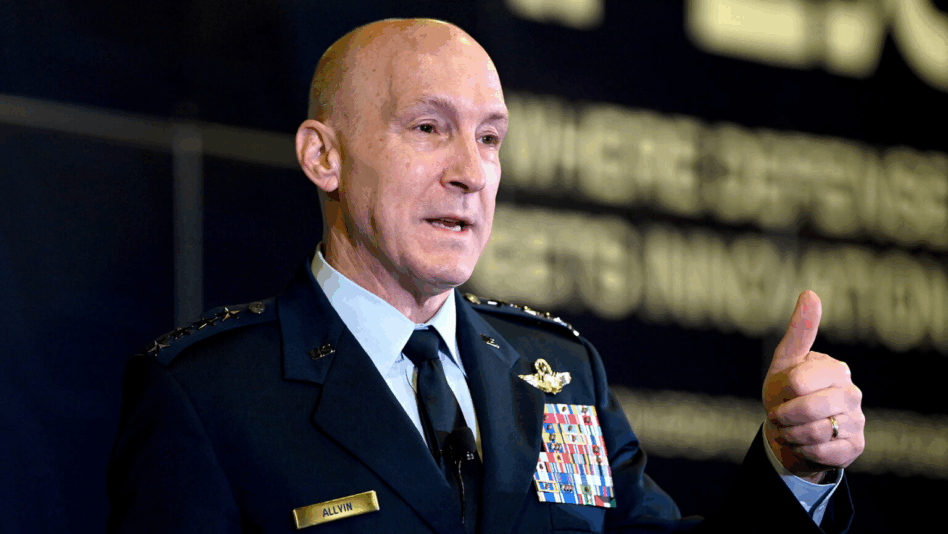Another day, another big shakeup at the Pentagon.
On Monday, Air Force Chief of Staff Gen. David Allvin unexpectedly announced his retirement halfway into his four-year term. The Air Force said Allvin—the service’s highest-ranking uniformed officer—will continue serving until his successor is confirmed to minimize disruption. Never a dull moment, huh?
Allvin is the latest in a string of Pentagon officials to be given a gold watch in President Trump’s first year. But not to worry, everything seems pretty copacetic (at least on paper). In a statement, Allvin expressed gratitude for Trump and Hegseth, and said, “More than anything, I’m proud to have been part of the team of Airmen who live out our core values of integrity, service and excellence every day as we prepare to defend this great nation.”
Secretary Troy Meink added that the “Air Force is fortunate to have leaders like General Dave Allvin,” who “has been instrumental in my onboarding.” Little did Allvin know that part of that onboarding would be planning his early retirement party.
Collision course: Luckily for you, we’ve got the inside scoop. A defense official familiar with the matter told Tectonic that Gen. Allvin’s departure followed internal disagreements over the Reoptimization for Great Power Competition (GPC) initiatives launched last year under former Air Force Secretary Frank Kendall. Meink, Kendall’s successor, disagreed with some of the GPC reoptimization focal points, and Allvin “went to the mat” on that.
For the uninitiated, the Air Force’s GPC initiatives focused on four key areas:
- Personnel development, which included consolidating force development functions “to provide Airmen a common, mission-focused development and training path” and redesigning career paths.
- Generating readiness by reorienting Air Combat Command, implementing large-scale exercises and Space Force readiness standards in contested environments, and restructuring “key processes related to aviation spares and weapons systems” to “improve weapon systems health.”
- Projecting power by redesigning wings into deployable units, separating Combat Wing and Base Command roles, elevating AFCYBER, and formalizing Space Force combat units.
- Developing Capability by standing up new offices and commands to align modernization; C2, cyber, EW, nuclear, and air systems development; and creating Space Futures Command as a Field Command to boost experimentation.
Internally, the Air Force’s reorganization was Allvin’s “passion for a while” and the “most controversial thing,” the official told Tectonic.
Last year, Allvin pushed for “reoptimizing the United States Air and Space forces into a ‘one Air Force’ approach.” As part of that, he wanted to have 60 air wings (40 percent of the Air Force) “capable of performing beyond just the tactical level of warfare and at a more advanced operational level by 2025.”
Jury’s still out on whether that “one Air Force” idea was the subject of the clash, but it would certainly align with the headbutting with Meink over service reorganization.
No nominees to take Allvin’s seat have been named yet, but one candidate is Gen. Thomas Bussiere, who’s overseen Air Force Global Strike Command since 2022 and was appointed as the Air Force’s vice chief of staff by Trump last month. Has anyone been keeping track of who’s talking about Air Force stuff on Fox?

